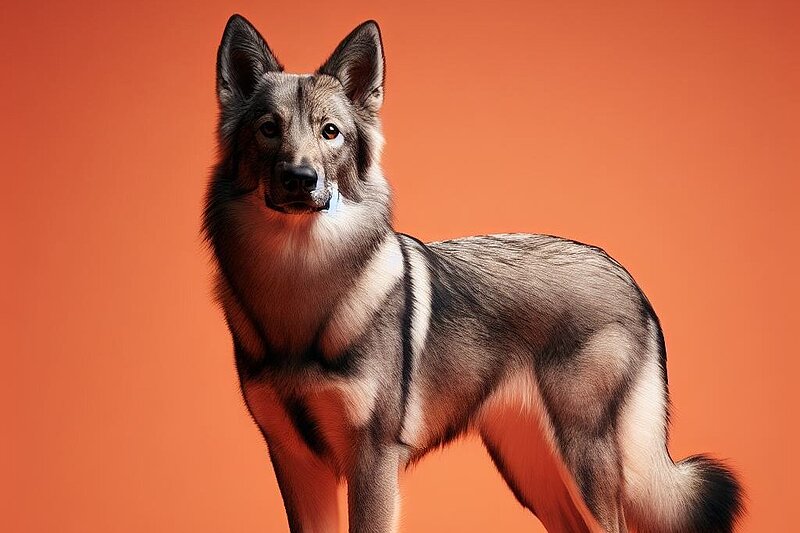The majestic Jämthund: a loyal companion from the far north
The history of the Jämthund: a legacy from the past
The Jämthund has a long and proud history dating back to Viking times. It was originally bred as a hunting dog for large game such as moose, bear and lynx. It owes its name to the Swedish province of Jämtland, where it has been considered an indispensable helper to hunters for centuries. The Jämthund was not officially recognized as an independent breed until 1946, although it had existed for much longer.
Who is the Jämthund suitable for?
The Jämthund is ideal for active people who spend a lot of time outdoors and are looking for a loyal companion. It is not necessarily a dog for the city, as it needs a lot of exercise and mental stimulation. A house with a large garden or proximity to woods and meadows are perfect for him. Families with children and other pets are also suitable partners, as long as the Jämthund is well socialized.
The character of the Jämthund: intelligent and loyal
The Jämthund is known for its intelligence and loyalty. It is a courageous and self-confident dog that forms a strong bond with its family. Despite his independence, he is very affectionate and loves to spend time with his people. The Jämthund is alert and has a strong protective instinct, which makes it a good guard dog.
Appearance of the Jämthund: an impressive sight
The Jämthund is a large, strong dog with an imposing stature. Males reach a shoulder height of 57-65 cm and a weight of 30-35 kg, while females are somewhat smaller and lighter. Its double coat is dense and weatherproof, typically in shades of gray with lighter markings on the face, chest and legs. The upright ears and bushy tail, which is often carried over the back, give it a watchful and noble appearance.
Caring for the Jämthund: tips for a healthy dog life
The Jämthund is relatively low-maintenance, but requires regular grooming, especially during the spring and fall shedding season. Brushing once a week is usually enough to remove loose hair and keep the coat healthy. Its claws should be clipped regularly and its ears kept clean to prevent infections.
Health of the Jämthund
The Jämthund is a robust and healthy breed with a life expectancy of 12-15 years. However, as with all breeds, certain genetic diseases can occur, such as hip dysplasia or eye problems. Regular visits to the vet and a balanced diet will help to keep your Jämthund healthy.
Training and exercise: An active dog needs challenges
The Jämthund needs plenty of exercise and mental stimulation. Long daily walks, running or cycling tours and challenging games and tasks are ideal for him. Training should be consistent and positively reinforcing, as the Jämthund loves to learn but also has a strong will of its own. Early socialization and obedience training are important to manage his natural independence.
Interactions with children and other animals
Well-socialized Jämthunds usually get along well with children and other animals. However, due to their size and temperament, it is important that children are supervised when interacting with the dog to avoid accidents. Other pets should be introduced slowly and carefully to promote harmonious relationships.
Recognition by the FCI and other organizations
The Jämthund is recognized by the Fédération Cynologique Internationale (FCI) and belongs to Group 5 (Spitz and primitive type dogs), Section 2 (Nordic Hunting Dogs). This recognition underlines the importance and standardization of the breed.
